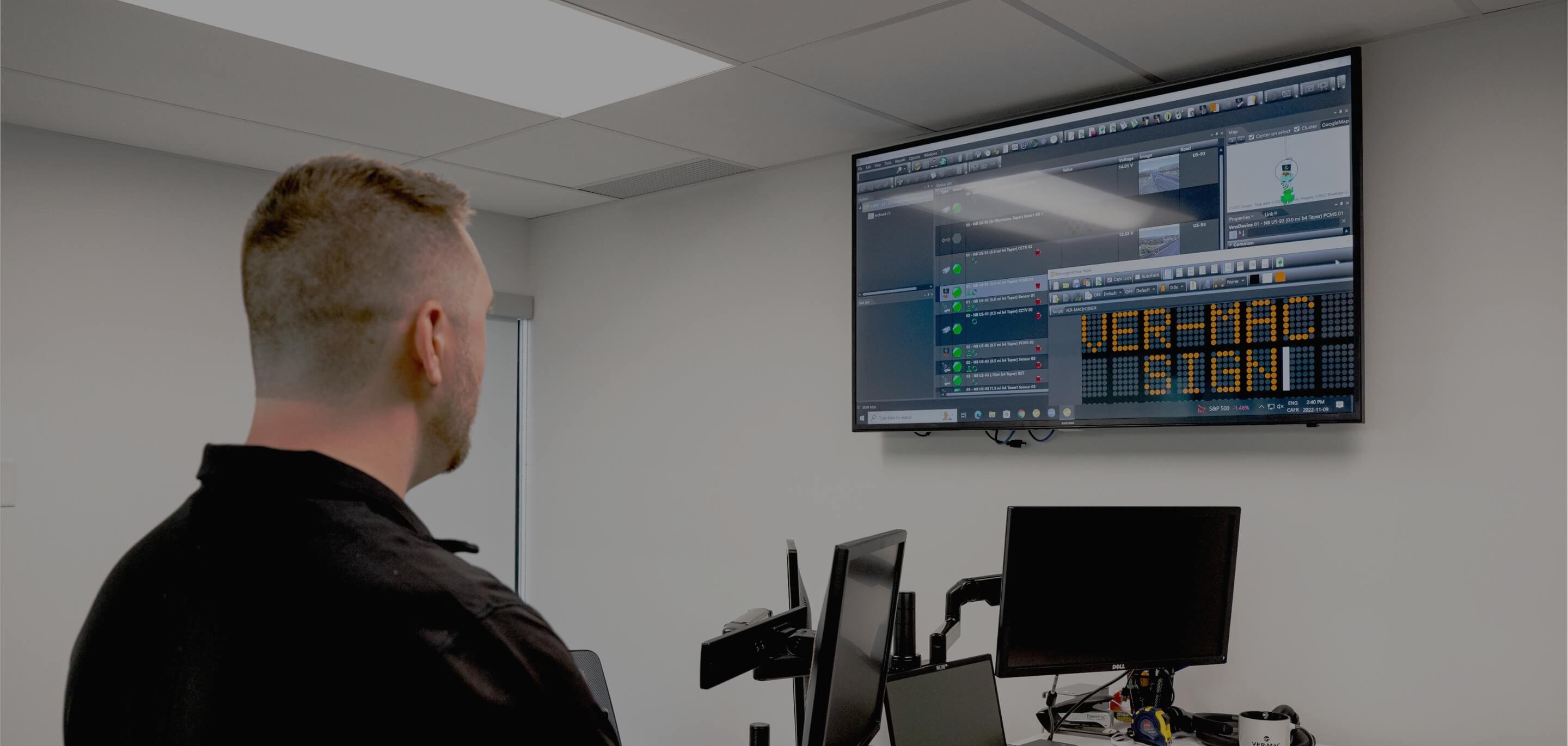What is a Smart Work Zone?
According to National Workzone Safety Clearinghouse, there were 106K crashes in work zones across the U.S. in 2021. By communicating real-time traffic information, Smart Work Zones allow motorists to anticipate conditions and adjust their driving before they reach a work zone or congested area. This helps reduce accidents, road rage, and improve overall mobility.
Why implement a Smart Work Zone?

Gains for Your Business
-
Safer Work Zones Fewer accidents involving workers and motorists.
-
Increased Productivity Less interruptions thanks to faster detection and response times.
-
Cost Savings Better traffic flow and fewer incidents = less loss of revenue.
How Does a Smart Work Zone Work?
A Smart Work Zone is comprised of a network of connected roadside devices. More concretely, sensors and probes collect traffic information. This data is then sent to the cloud, where the data is analyzed by algorithms. Actionable messages are then published on message signs leading up to the area of concern. See how a Smart Work Zone by Ver-Mac works:

Step
Data Collection
JamLogic software wirelessly collects real-time traffic data via high-speed modems from a variety of field-sensing devices. Our software can also utilize or combine common third-party traffic flow data sources.
Step
Analysis
The JamLogic server then analyzes this data based on project-specific algorithms. The logic and messages are predetermined and approved by the project engineer or agency.
Step
Automated Information
Finally, JamLogic automates the messages and provides real-time information to the motoring public via connected vehicles and navigation systems such as Waze, as well as to project managers, agencies, Traffic Management Centres (TMCs) and public websites.
Incident alerts can also be sent to key stakeholders via emails and/or text. All system data can also be provided in a real-time API data feed utilizing the most current version of the FHWA’s Work Zone Data Exchange (WZDx).
Benefits of Using Smart Work Zones

Increased worker and driver safety
Cost savings due to fewer incidents, delays, and injuries
Improved mobility over the road network
Real-time information to motorists
Scalable, for work zones of all sizes
Data logging with JamLogic software

Traffic condition analysis
Access to traffic reports (optional)
Frequently Asked Questions about Smart Work Zones
Which technologies are used in smart work zones?
Smart work zones use both hardware and software. Connected sensors (hardware) send traffic data to the cloud, where it is analyzed by our JamLogic software. Following this analysis, preset messages are automatically published on connected upstream message signs (hardware).
How can smart work zones improve traffic flow and safety?
Since smart work zones warn motorists of traffic conditions before they reach an area of concern, forewarned drivers can slow down and adjust their driving ahead of time.
Smart work zone applications such as zipper merges have been shown to reduce queues by up to 40% and improve traffic flow by approximately 15%.
Applications such as Queue Warning Systems (QWS) have been shown to reduce the potential for rear-end crashes by 18 to 45%.
What kind of data is collected and analyzed in smart work zones?
Speed sensors gather vehicle information such as speed, occupancy, and volume. This information is then sent to the cloud and analyzed by algorithms. Preset informational messages are then automatically published on portable changeable message signs.
Are there any examples of successful implementations of work zones?
Here is a concrete example of a large smart work zone in Lake Charles, LA.
Smart Work Zone Featured Project | Lake Charles, LA | Street Smart Rental - YouTube






